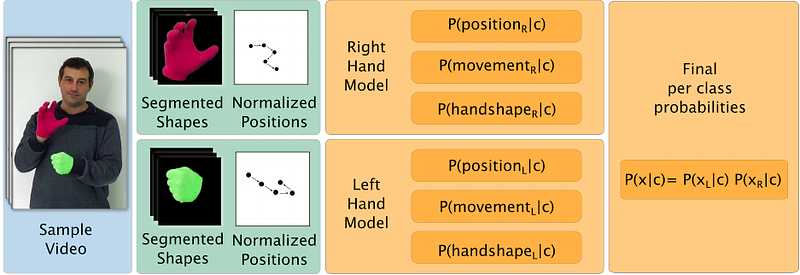Sign Languague Recognition without frame-sequencing constraints: A proof of concept on the Argentinian Sign Language

Sign Languague Recognition without frame-sequencing constraints: A proof of concept on the Argentinian Sign Language
Franco Ronchetti, Facundo Manuel Quiroga, César Estrebou, Laura Lanzarini, Alejandro Rosete
AbstractAutomatic sign language recognition (SLR) is an important topic within the areas of human-computer interaction and machine learning. On the one hand, it poses a complex challenge that requires the intervention of various knowledge areas, such as video processing, image processing, intelligent systems and linguistics. On the other hand, robust recognition of sign language could assist in the translation process and the integration of hearing-impaired people, as well as the teaching of sign language for the hearing population. SLR systems usually employ Hidden Markov Models, Dynamic Time Warping or similar models to recognize signs. Such techniques exploit the sequential ordering of frames to reduce the number of hypothesis. This paper presents a general probabilistic model for sign classification that combines sub-classifiers based on different types of features such as position, movement and handshape. The model employs a bag-of-words approach in all classification steps, to explore the hypothesis that ordering is not essential for recognition. The proposed model achieved an accuracy rate of 97% on an Argentinian Sign Language dataset containing 64 classes of signs and 3200 samples, providing some evidence that indeed recognition without ordering is possible.


